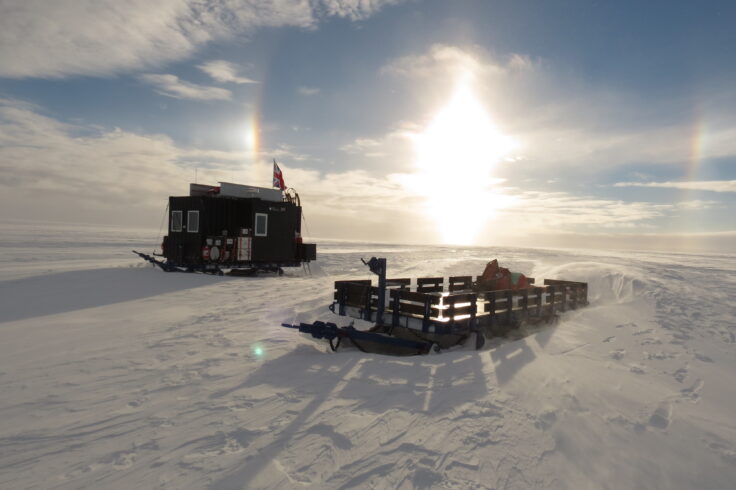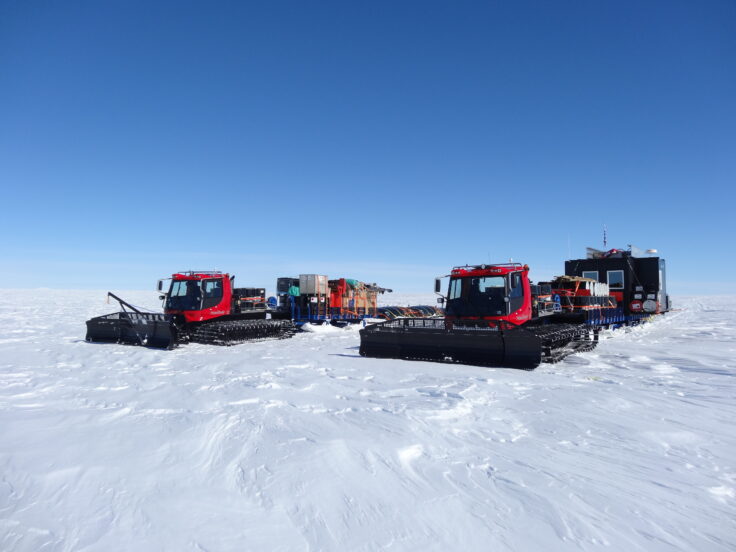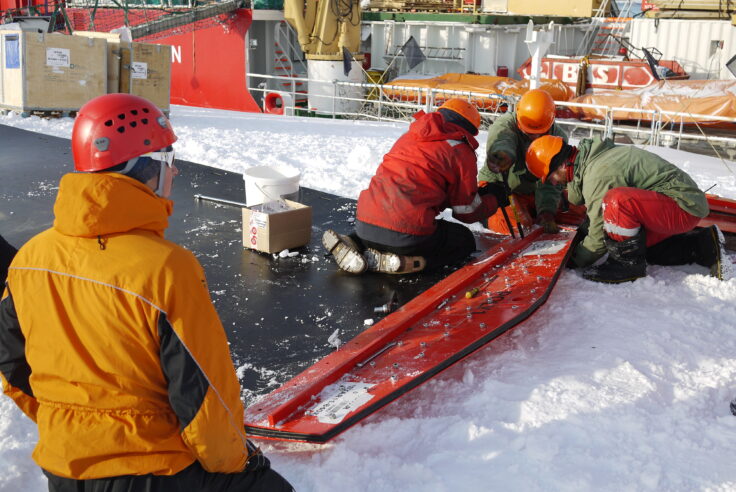A rendezvous in the middle of nowhere
17 April, 2025 by Jamie Oliver
Antarctica, January 2025. Three expert teams are making their way across the stark frozen landscape, by sea, land and air – and they are planning to meet. Jamie Oliver shares …
An innovative system for transporting science teams and their equipment across vast areas of Antarctica’s ice is the Tractor Train Traverse. A combination of vehicles, sledges and living accommodation allows science and support teams to live and work in remote areas a long way from the research stations at Rothera or Halley.


The tractor train traverse system supports deep-field science missions to improve understanding of what’s happening to the West Antarctic Ice Sheet where the greatest rates of ice loss over the last decades have been observed. New knowledge about the stability of this ice sheet is critical for making better predictions about how the ocean and ice will respond to environmental change, and what impact this may have on future sea level. iSTAR is an ambitious scientific programme funded by the Natural Environment Research Council (NERC). It brings together leading scientists from 11 UK universities and from British Antarctic Survey (BAS).
17 April, 2025 by Jamie Oliver
Antarctica, January 2025. Three expert teams are making their way across the stark frozen landscape, by sea, land and air – and they are planning to meet. Jamie Oliver shares …
27 May, 2022
The British Antarctic Survey (BAS) field season has finished for another year. RRS Sir David Attenborough departed Rothera Research Station for the final time earlier in May and is …
20 December, 2021
Science and support teams from British Antarctic Survey (BAS) are gearing up for the start of the Antarctic summer field season. All five of our research stations will be open …
29 November, 2016
As spring returns to the southern hemisphere British Antarctic Survey (BAS) has started another research season which will take them over land, sea and ice in search of answers to …
23 November, 2016
New study reveals when West Antarctica’s largest glacier started retreating Reporting this week (Wednesday 23 November) in the journal Nature an international team led by British Antarctic Survey (BAS) explains …
This joint UK-US research programme aims to improve the understanding of the processes affecting ice sheet stability to predict, with more certainty, the future impact of sea-level rise from Thwaites …
The polar ice sheets play a major role in controlling Earth’s sea level and climate, but our understanding of their history and motion is poor. The biggest uncertainty in predicting …
Understanding the contribution that polar ice sheets make to global sea-level rise is recognised internationally as urgent. The mission of this five-year project is to capture new observations and data …
Science on the move - the mission to understand the stability of the West Antarctic Ice Sheet
iStar-C - strives to understand the dynamical control and response to change of Pine Island Glacier



Vehicles team